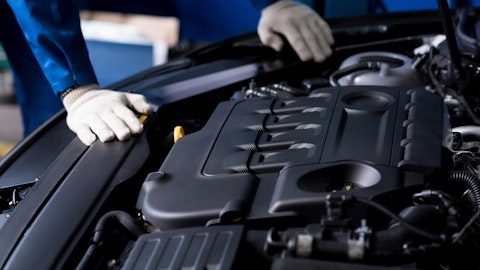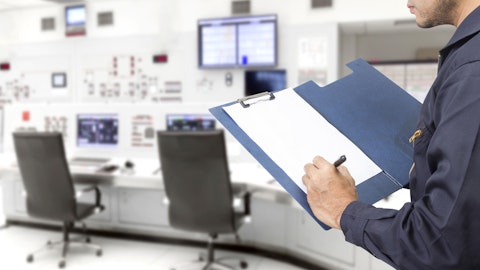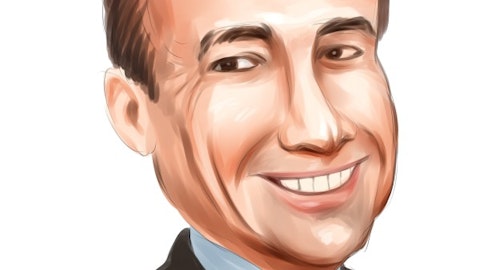So that helps us with our productivity, keeping our — not that we don’t have significant overtime during this time of season, but it does allow us to keep our crews fully staffed, and hydration and safety is very important for us during the hot summer. So we’re feeling good right now and zinc costs, they’ve peaked and should continue down in our kettles as the year goes on, keeping in mind that LME, while it’s down, the premiums for this year were increased significantly. So, it’s not a one-to-one comparison when you look at it year-over-year.
John Franzreb: Got it. With that, I’ll get back into queue. Thank you for taking the questions.
Operator: The next question comes from Adam Thalhimer with Thompson Davis. Please go ahead.
Adam Thalhimer: Hey, good morning, guys. Congrats on a solid start to the year.
Tom Ferguson: Good morning.
Adam Thalhimer: First question on DGS. Is that something you can integrate with Precoat, or does Precoat already have a similar solution?
Tom Ferguson: Yes. Precoat is one, we’re looking at automated lines running at up to 700 feet per minute versus more of the batch process, although we do have some more automated processes on the hot dip side with our spin plans. So generally, they’ve got a lot of controls and automation already in place. They have their own proprietary software that allows them to manage those massive inventories in huge amounts of steel and aluminum going through their plants called CoilZone, and that — which is also something that integrates them with their customers. So different proprietary software structures, but both accomplish — both allow the businesses to accomplish the same kind of things from a productivity, efficiency and customer integration perspective.
Adam Thalhimer: Okay. And you alluded to this, but you said there were some stronger end markets that were offsetting weakness in HVAC, transportation and construction. Can you elaborate on those?
Tom Ferguson: Yes, we’ve had strength in the solar market, particularly. So, when you look at infrastructure, bridge and highway, even ag for us has been — have been some strong markets over the last few months. It looks like that’s going to continue. And that’s why I mentioned you just look at the amount of work that has to go into our bridge, highway, water systems, there’s airport construction and activity going on everywhere. So I’ll keep it tied to transmission distribution, renewable energy, including solar, and bridge and highway and general infrastructure. Those are strong and look to continue that way.
Adam Thalhimer: Great. And then just a couple of things for modeling purposes. Can you give us any help with corporate expenses and D&A going forward?
Tom Ferguson: Phillip?
Philip Schlom: Corporate expenses should be fairly flat. We are just coming off the TSAs with AIS that we had, and then you’ll see those kind of be — remain pretty flat to where they were at the end of Q1. And then D&A similarly, we finished all the purchase accounting at the end of the first quarter related to the Precoat acquisition after the first year. So these should represent fairly good run rates.
Adam Thalhimer: Got it. Okay. Thank you, guys.
Tom Ferguson: All right.
Operator: The next question comes from Brett Kearney with Gabelli Funds. Please go ahead.
Brett Kearney: Hi, guys. Good morning. Thanks for taking my question. Curious, Tom, particularly as you’ve recently toured some of the Precoat plants, to the extent they have some capacity maybe freeze up later this year, you mentioned opportunities expanding their supply chain solutions offering and converting some customers who run their own lines internally. Anything incrementally you guys are seeing in terms of maybe folks you already serve well on the galvanizing side that could also benefit in some area from Precoat solutions and kind of the cross-selling opportunity there?



